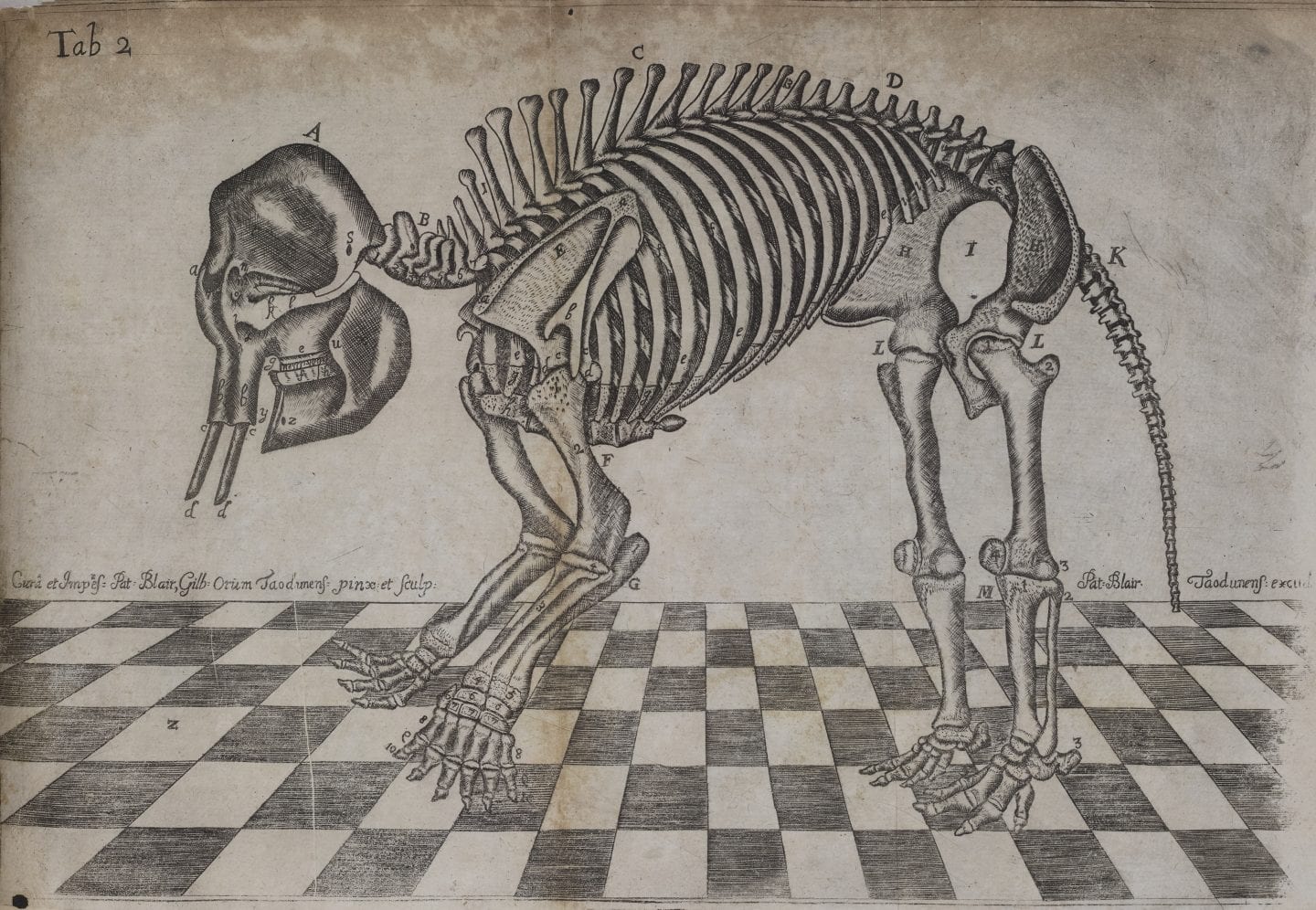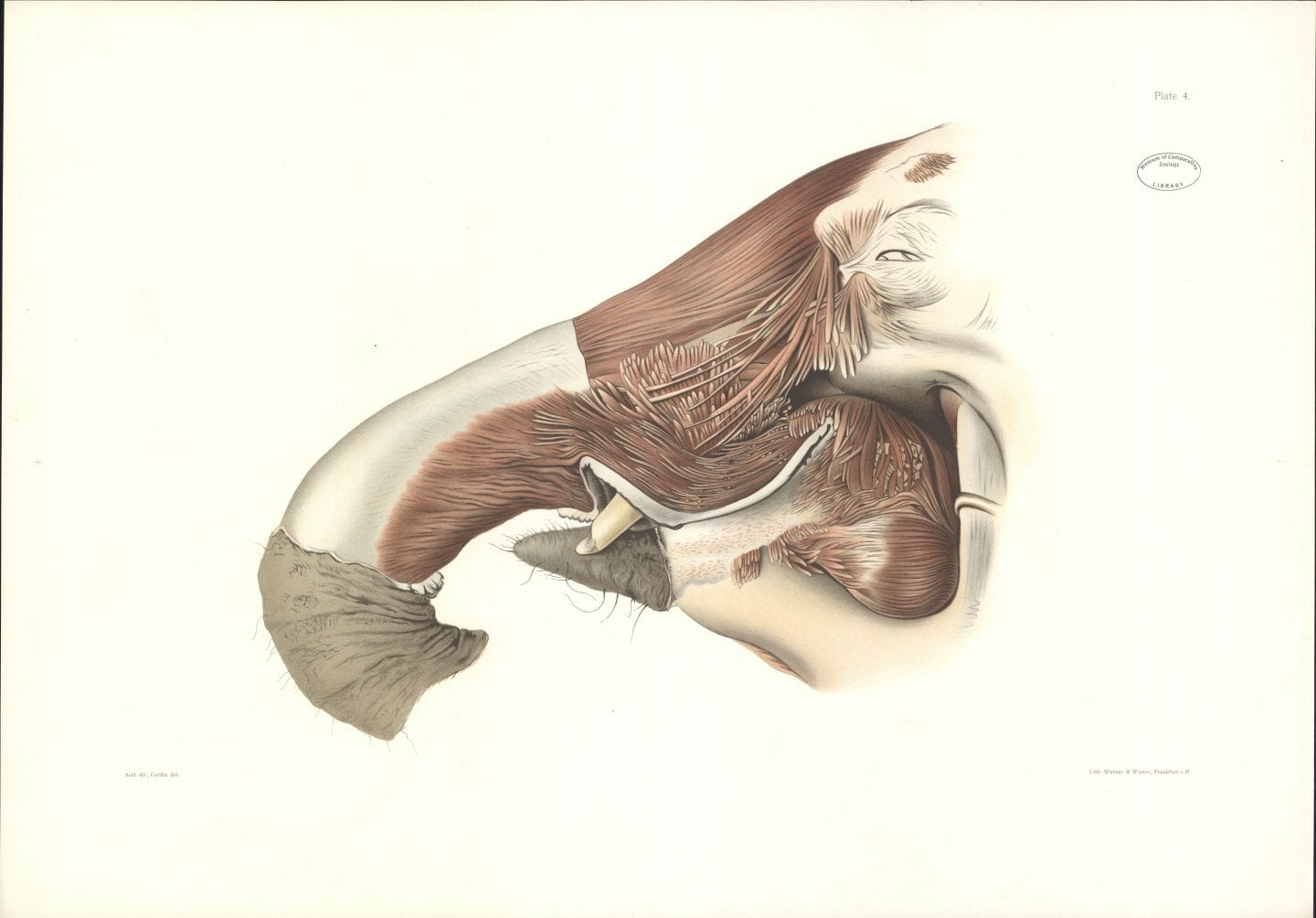Three muscle fiber patterns inside trunks work together to provide the strength, support, and resistance needed to bend and twist with extreme agility.
Introduction
Under the scorching sun, an African elephant dips his twisting trunk into a waterhole and slurps up mud. Thousands of muscles guide its delicate dance as it probes every which way. Full of muddy water—up to 3 gallons (12 liters)—it swings above the elephant’s head and curls upward so he can spray his own back with the cooling mixture.
In 1706, Scottish surgeon and anatomist Patrick Blair described the complex musculature of an elephant’s trunk, noting intricate patterns of muscle fibers that permit such varied movement. “And I think I may with good reason make an analogy betwixt it and the tongue,” he wrote, because both trunks and tongues lack bones, enabling these organs to contort in almost any direction.
The Strategy
Most muscles require bones to support them and joints to cantilever their movements. To raise your forearm from your side, you flex your biceps, which rotates the forearm across the hinge of your elbow.
Muscular organs without bones and joints—like elephant trunks, snake tongues, and octopus arms—are called muscular hydrostats. They support themselves instead with a complex arrangement of muscle fibers. The most important feature of hydrostats, and what enables them to move without bones, is that the volume of water within them stays constant. An elephant trunk is composed almost entirely of water and muscle (which is itself mostly water). Because this volume of water stays constant, when the elephant moves its trunk in one direction, there will automatically be a compensating change in another direction.
The muscle fibers that control these movements are arranged in three patterns: parallel to the length of the organ, perpendicular to its length, and obliquely wrapped down its length like candy cane stripes. In an elephant’s trunk, each fiber pattern controls specific actions or provides the support required to preserve its overall shape.
In order to bend, longitudinal fibers on the outside of a trunk must contract and shorten on one side. But to prevent the trunk from folding in like a pinched hose, perpendicular fibers that are arranged radially throughout the cross-section must tense up to resist the compression of bending.
When flexed, these radial fibers form a kind of “joint” like a solid ring around which the trunk can bend while maintaining a constant diameter. Because these fibers run the length of a trunk, an elephant can flex the “ring” muscles at many points, effectively having a movable joint that allows bending at nearly any location.
Elephants can also twist their trunks because the oblique fibers coil like around them. If you looked down the end of a trunk, some helices would coil in a left-handed or counter-clockwise direction while others would be right-handed. The different orientations of these fibers enable elephants to twist their trunks in both left- and right-handed motions.
Science Magazine: How An Elephant’s Trunk Can Be So Strong and So Gentle

The Potential
Elephant trunks contain more than 40,000 muscles while entire human bodies contain fewer than 650. Trunks can lift 770 pounds (350 kg) yet pick up a single tortilla chip without breaking it (as seen in the video above).
The field of robotics has infinite applications for strong, dexterous movements. Robots that mimic elephant trunks have already been developed to grip fragile objects or serve as a “third-hand” for medical applications. As humans explore Mars and other celestial bodies searching for signs of extraterrestrial life, rovers equipped with robotic elephant arms might be strong enough to clear boulders from pathways yet agile enough to gingerly swab objects for bacteria.









